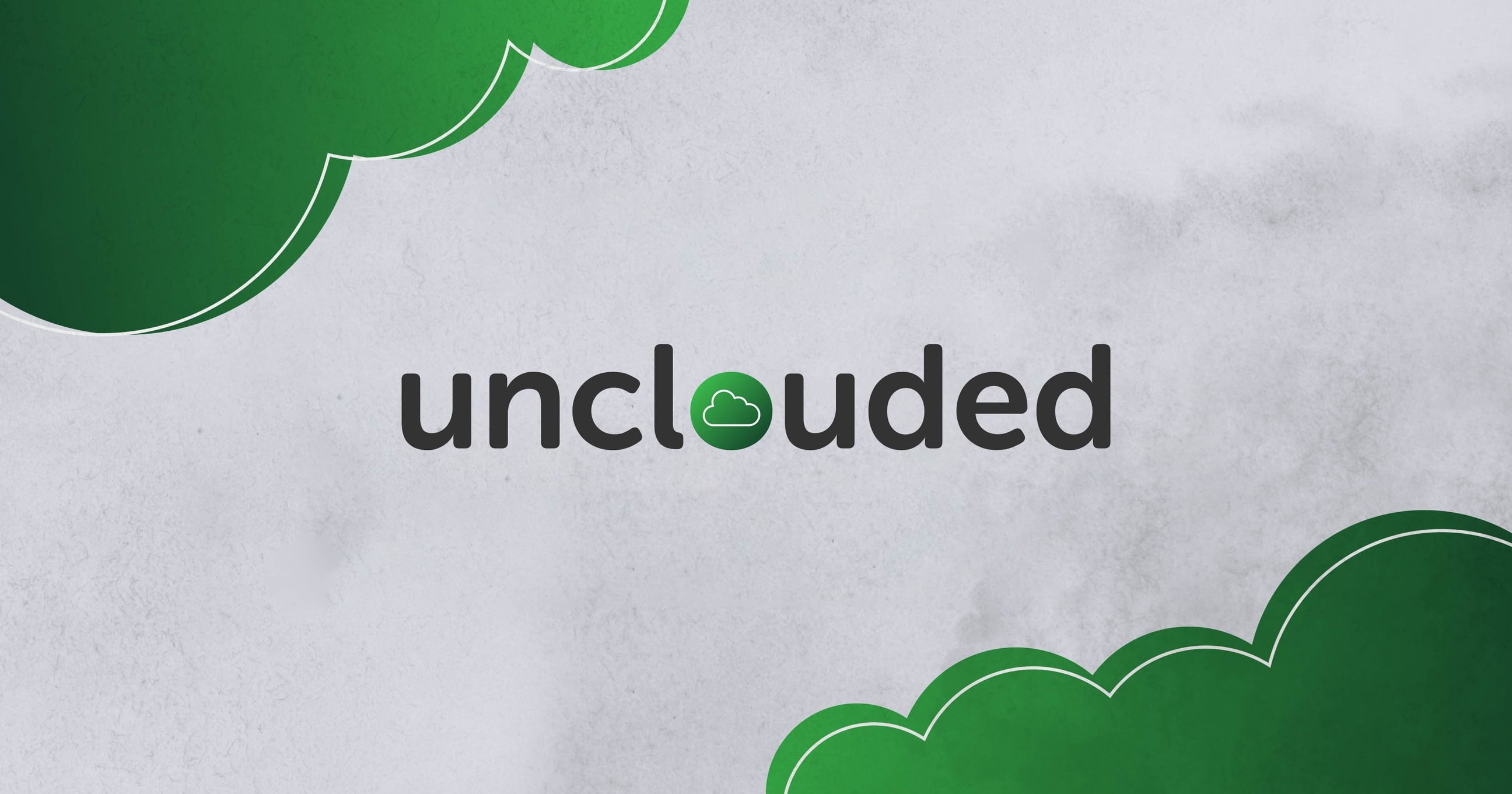On the surface, the public cloud is mainly affordable for most businesses, costing just a few cents per gigabyte. Yet, overspending and waste are rampant. Last year, 40% of companies overspent on the cloud and wasted over a third of their spending, meaning resources were overprovisioned and unused. As a result, only 37% of users say they actually got the value they expected over the past year.
There are a few reasons why this happens. For one, the cloud has become so complex that users sometimes pay for services they don’t understand or need. And a growing skills gap exacerbates this issue. At SMBs in particular, IT and finance teams often lack the experience or bandwidth required for effective cloud cost optimization. Add in the innate unexpectedness of pay-as-you-go pricing models that yield different bills every month, and it’s a recipe for unwieldy bills.
But inevitably, “market forces incentivize change,” Structure Research managing director Phil Shih says, and the days of overspending could soon be a thing of the past. Listen to my entire conversation with Phil below as he explains how concerns around cost are fostering healthy competition among cloud providers and creating a savvier user base.
The following transcript has been slightly edited.
Mike Maney: As providers innovate and cloud offerings get increasingly robust. User bills can add up quickly if the costs aren’t optimized, and between unpredictable pay as you go models and steep price tags on data migration, many providers read the biggest hyper scalars aren’t exactly eager to help users save or split their workloads across more affordable ecosystems.
But with a growing roster of providers offering a more affordable cloud, the market could be in for a cost reckoning. We’re sitting down today with structure research analyst Phil sheet to discuss the rising cost of cloud and how both users and providers can navigate this trend.
Welcome, Phil.
Phil Shih: Looking forward to it. Thanks for having me.
Mike Maney: The problem with the high cost of cloud isn’t the initial price. It’s the overspending and waste. Some of the research on this: Even before COVID-19, more than two thirds of users expected to blow their 2020 cloud budgets, recognizing that unexpected costs always inevitably arise. And the pandemic certainly exacerbated that trend. 40% of companies say they overspent on cloud last year. Audi’s spending on cloud jumped 12%, between March and April into 2020.
So what causes companies to overspend on cloud? Is it a matter of not fully understanding the services they need versus the services they pay for?
Phil Shih: It’s a great question. One aspect of a question that has many, many aspects to it. I think you alluded to this in your comments as you opened. There is the perception out there that cloud is cheap. And that can quite easily lead to a false sense of security, and a tendency to say, ‘Oh, yeah, you know, this stuff is really easy to use. It’s just a few cents an hour, and by the end of the week, the month, you find yourself saying wow, that was maybe a little higher than I expected. I didn’t quite understand what that price translated to when you kind of factor it over the course of weeks and months, and the additional services I tacked on can lead to over provisioning.
So I think at one level there, there’s that kind of element driving it. Certainly lack of information, lack of clarity, and how these cost structures work. plays a part as well. When you think about the big public clouds, the hyperscalers, it’s a more technical experience. There is quite a bit of digging user guides to read through things. That takes time and energy, and are not always necessarily really clear, at least not to, especially if you think about small to midsize organizations who don’t necessarily have the resources to dig through that.
At one level, it’s perception, I think it’s a lack of clarity, there’s a lack of understanding how your infrastructure events spend, can scale a matrix, traffic surges or events that you’re not expecting, like a global pandemic that we’re living through.
If you think of those factors, organizations, especially if they’re relatively new to cloud, and everybody’s new in one way or another, because this is a new kind of way of doing things, then yeah, I think the expectation is that those stats that you cited are, are probably not isolated cases. I think you’ll probably see that happening, probably more than we would like. I think we’re probably, you know, moving in the right direction, but it’s going to take some time to get there.
And I’d also say that on the pay as you go and the scaling, especially when you think about small to midsize organizations, they’re used to purchasing things that make sense to them—mobile phone service, cable, television service, Internet access, service. Everything is on a monthly basis. It’s a fixed cost, predictable. You can budget out the year. But when you’re talking about cloud infrastructure, in a pay as you go utility base model, there are a few more calculations to make, and it’s not so simple, straightforward and predictable.
If you put that into the cauldron and mix it up, yeah, you get it, you get a situation on the ground that doesn’t run necessarily as smooth as you might like.
Mike Maney: Yeah, it keeps Quinny Pig, Corey Quinn, in business, that’s for sure. You said something in there that I thought was interesting, and I don’t think a lot of people realize it. It’s not just the hard cost or the expected costs of infrastructure. And even then it’s not always planned for different providers. But it’s also things, you know, cost of training or support that come into play that you don’t expect, right? There’s more to the cloud than just turning it on?
Phil Shih: Oh, absolutely. There’s a learning curve. And that learning curve, depending on how new you are to cloud, how large an organization is, or how small, or how limited in IT resources, can heavily impact your cloud experience. Some organizations come in relatively unequipped or just not being able to anticipate the different things that their staff needs to learn and understand and, of course, then implement on a regular basis.
You’ve got to keep in mind that these public clouds, especially their platforms, and tool sets, at the end of the day, they’re not necessarily user experiences, or user experience-driven services. Their job is not to proactively tell you, or advise you. Whereas a service experience and a lot of service provider-oriented clouds, that would be their job. They would tell you, when you sign up, or make it clear that for example, you should back this up, and we have a service where you can just tell us what to back up.
On the public cloud, that’s something that you would have to likely know for yourself. If you’re going to run on this kind of platform, use our tool set, you’re going to have to make sure that you back this up yourself and use our tools to make that possible. But that’s not always, you know, necessarily obvious to users. And that can also drive costs, right? It’s like, oh, shoot, I have to back this up. That makes sense. But I also have to spend more, so my budget might be pushing up even more.
Mike Maney: So should providers be more forthcoming about their cost structures?
Phil Shih: Absolutely. That’s obviously a good thing for the end user and a good thing for the industry at large, just to be as helpful as possible. But there are limitations in that, especially when you have services like public clouds that are so complex, and have just an array of different types of infrastructure and you can buy an array of services that you bet on that have costs attached to that. Simplifying that is obviously something that I think the sector at large should shoot for.
Mike Maney: That complexity is, if you’re watching it from the outside, almost by design, right? It’s easy to come on in, and use whatever it is that you think you’re going to need. But that complexity then just makes it complex. And you’re stuck in there, and you are overspending.
So how much of that spending on cloud then just goes to waste from companies? Are they just paying for services they’re not using? And they just forget about them? There’s always the lore and the tales of people leaving something turned on, and then getting a surprise $10,000 $100,000 bill? Or are there other repercussions to getting, you know, just overspending?
Phil Shih: I think it’s all of the above. I think you get into a situation where you’re not able to predict capacity, and then you over provision, and you get into a situation where you’re not aware that your workload would work better with reserved instances or spot instances or other types of models that would reduce your cost.
These are not necessarily obvious to people who use cloud and that’s what we’ll probably get into during our chat. There are tools out there or services out there that are starting to help people with that. But I think you’ve hit that point on the head.
The larger public clouds don’t necessarily see that as their job, right? They’re trusting their ecosystems and technology and internal IT departments to go figure this out. We’re a platform with a toolset, we’ve scaled this so that the cost, if you use it right, can absolutely be attractive. I mean, that’s why there’s this momentum in the cloud industry and why this model—which I think you and I still believe—is the best way of doing things, the most optimal way of doing things long term. But yeah, there are going to be bumps in the road to before we get there,
Mike Maney: I think for some of the largest enterprises, with the largest apps and use cases, complexity and spending is sort of accepted. It’s the cost of doing business at that level of scale. But for a lot of smaller businesses, they’re running on probably a lot tighter margins. And they probably need something more predictable. A more predictable spend, like you were saying: I’m used to paying whatever it is I pay for Netflix a month, right? They’re sort of looking for something like that to make their job life a little bit easier.
Phil Shih: Exactly. And that’s just it. I mean, that’s why we have things like the alternative cloud market. That’s why not every organization chooses to, or even should, run on some of these public cloud platforms. It definitely requires finding the right infrastructure fit. It’s about matching your requirements, your preferences, your expertise and resources, with not just the cost of the infrastructure, as well as the service experience, as well as the outcome.
I think what the landscape looks like is a reflection of end users preferences and habits and needs. And that’s why I don’t think that’s going away. If anything, I think you’ll find with more organizations moving to cloud, you will see increased demand for different types of services, different types of consumption models. And I think that’s fair. That’s playing out in the marketplace as we speak.
Mike Maney: As Matt Asay often says, it is a big pie. And to paraphrase, there are slices that fit everybody.
So to take a little bit of a counterpoint to this, should users and customers shoulder some of the blame for this overspending and waste? Or is it just on the providers?
Phil Shih: I take the perspective that I don’t know if it’s anybody to blame, necessarily. I think there are responsibilities on both sides. I just commented how I think it’s a good thing for the sector to make things easier to use, and to be more transparent. For the big public clouds to do the best they can to make their services easy to use, I think it’s good for them and it’s good for everybody. It helps educate people so that they can make the right choices, find the right fit. Sometimes it’s not necessarily good or bad, it’s just different, right> And I think that’s what really is driving at the end of the day.
Mike Maney: Let’s throw in multicloud. Recent studies show that 92% of companies now use a multicloud strategy, which is going to make their ecosystems larger, and, therefore, probably make costs a little bit harder to track. And one of the biggest challenges with this has been companies not even being aware of where their spikes have coming from. Fewer than 20% of users say they’ve been able to immediately detect their growing cloud costs and the infamous cloud billing surprises.
So what about cloud cost optimization? What does this term even mean? And sort of who is responsible for it?
Phil Shih: I think you can look at it from many different levels. But it’s ultimately about being as efficient as you can with your cloud spend and having it match up with the specific requirements of the workload, and the business. Now, that can come from a technology perspective. Cloud optimization could be driven by software technology, certain tools and services that you can either procure from a third party vendor, or from the service provider itself.
But optimization could also speak to internal resources and processes and knowledge that an organization has to develop to keep to make sure that they continue to use cloud infrastructure in an efficient way. And that aligns again with their technology and their business objectives. That’s how I think of it. Obviously organizations want to be as efficient as they can in the cloud world. It involves not just a change of mindset, but a shift in how internal IT management or internal IT resources function, how they look at things, what technologies they use.
You referenced multicloud— it just throws another kind of variable into the mix, right? It’s tough enough. Like, if you’re using a public cloud, for example, to learn everything you can about that and keep up with everything that changes. It’s another thing that that happens all the time, cost structures, cost, price points, tools, services, how they’re consumed, how they’re built, can change, as well.
Mike Maney: Pinterest owes AWS something like $3.2 billion over the next eight years, and they’ve gotten to the point where they’ve appointed spend captains to oversee how much cloud it’s using to eliminate waste. How important is it for engineers and developers to have a deeper understanding of costs? Is this gonna be a new skill set for new hires?
Phil Shih: Absolutely. When you move up to the middle of the market to the larger enterprise space, there’s just this sheer scope and complexity of what people are dealing with. And like we said, you throw that multicloud variable into the mix and there’s just so many moving parts to try to juggle and to manage. That just is exceedingly difficult. And absolutely, you’re going to have some organizations where you’ll have that expertise built up in certain teams, or in certain people’s responsibilities and portfolios.
When you get to the level of, say, Pinterest, that’s a great example. Dedicated people and teams that spend all their time managing that is good. It’s core to their business. Because if you’re running at that level of scale, and you’re not efficient, you’re not going to have a successful business at the end of the day. And so that’s really what this is all about, right? It’s having the technology enable a successful business or a positive business outcome. And without it, it ‘s just not going to happen.
Big picture: as the world moves into the online medium, increasingly, you’ll find that you need to have at least more resources that focus on cost optimization, managing costs, and will trickle down to midsize organizations, SMB space. Maybe not a dedicated spend captain, I think that’s what the term you used, but people on the team that are not just kind of dabbling in this when something goes wrong and being reactive, but being more proactive and spending time every week checking in on this, understanding it, monitoring it, managing it, using the tools that they’ve implemented. So yeah, absolutely. It’s maybe a smaller part of the world today. But I think we know where this is going.
Mike Maney: You look at some of the recent market stats and research that have been out there. And the big three or four, however you define it, are still the biggest slice of the pie. But I’ve seen stuff from 451 from slash data and others that have basically said that a third of cloud spending is going to alternative cloud providers. A third is a big chunk of the market. There’s often more affordable options. So what does this mean for the future of cloud cost? Is it gonna keep driving it down and commoditizing it, at least for infrastructure?
Phil Shih: It’s a great question and I’m going to assume you let me kind of go a bit open ended with it. I think the future is headed in a good direction, I think the way things are going is that all the cloud providers, the hyperscale, guys, the alternative guys are incentivized to do right by the customer. And you’re seeing this because customers are going to have a lot of choices.
The technology is there to handle multicloud deployments. And so the big guys, especially, can’t assume that they’re going to just get everything and everybody, it’s going to be a competitive landscape, it’s not going to be a one size fits all platform. If anything, it’s going to start to move away from that. And so I think everybody’s incentivized, again, to do things the right way. To be less opaque to have more transparency. And you see this with not just the tools, third party tools, but also, the big guys. And service provider oriented clouds have various different types of features, or direct services that help customers save, they are vested in the customers actually saving and spending less with them.
You saw through the pandemic, we track here at Structure what the public clouds are doing every quarter. And what really caught my attention during the second quarter of 2020, which was the first kind of heavily impacted, pandemic impacted quarter, growth was down. And AWS management came on their earnings call and said, Hey, you know, part of this is that we reached out to customer and say, Hey, we know what’s going on, how can we help you save money? How can we be proactive to get your bill to come down? Here are the tools you need to use. And I don’t want to be a total cynic. But I don’t know if that happened in the earlier days, five years ago, three to six years ago.
But there’s an incentive now, to show that we can bring you tremendous efficiencies through scale, economies of scale, and economies of innovation. But we also can take that, and show you how to reduce your bill, and help you drive towards that successful positive business outcome. So I really think that that’s where we’re headed.
Like any maturing industry, the kind of shady, I don’t want to call it shady, but you know, the stuff that doesn’t work as well kind of fixes itself over time, because the market forces incentivize that, right? So if you are not going to play that game, if you decide to just ignore the customer, and, in an extreme example, just say too bad for you, I’m going to make as much money as I can while you overspend… Well, your position in the market may not be sustainable as other platforms that serve the customer.
And the customers will speak. They will speak, they will move, they will migrate, they will respond. And so that’s why looking out into the next 5-10 years, I’m optimistic.
Mike Maney: It feels like an inflection point. And you mentioned maturity for the cloud cloud market, but just for digital transformation in general. Because we’re at a point where customers actually do have the ability to move their stuff around. They do have a choice for the first time where they can put their cloud or put their workloads. It’s no longer just stuck at that top three. Others have caught up, or at least the market has caught up to be able to provide those core qualities they need.
And we’re also at a point where the customer set is no longer just the early adopters. We’re now at that SMB level of the evolution of cloud and that transformation to where the expectations are different. As somebody once said: spending might keep growing, but overspending shouldn’t.
Phil Shih: Absolutely. I think that captures this last 15-20 minutes. Everything is moving in a positive direction. There’s optimization, efficiency, all these words describe what’s happening. And the inflection point has happened. We’re living it right now.
I think if you look back, I may have mentioned this in some of our other chats, but I’ll risk repeating myself. This is the second major inflection point in the history of cloud. I think the first one was the financial crisis back in ‘08-09, a little over a decade ago. And that kind of created the conditions for cloud awareness. And then the first stages of cloud adoption based primarily on cost, not necessarily optimizing, which we’re talking about now, because we’re talking about a more mature sector. But back then just reinventing how we deploy infrastructure and looking for a way that’s more efficient and decision makers back then were in dire need of being more efficient in cutting expenses. That’s led to the wave of growth across the cloud sector.
And for the last decade, with the start of 2020, a new decade, another inflection point. I’m sure we didn’t hope for it or wish for it. And we’re certainly not enjoying many elements of it. But you know, this is another inflection point, another push. Cloud adoption is always needed. The incentives have always been there. They may not have been as let’s say, intense, or as top of mind. But now, with this environment, and this just massive shift to doing things online, whether you’re a small business or a large corporation. I have a hard time finding a scenario where it doesn’t.
So the difference between ‘08-’09 and 2021 is this happening on a global basis. The market was a bit more regional if you go back then. Just primarily the United States. And then as the last decade started, as cloud moved, you saw it move to Europe. It wasn’t that long ago, where Europe and the UK was served by, on the public cloud side, one availability zone in Ireland. That’s just a far cry from what we see today. Not just North America, Canada, Western Europe dotted with cloud infrastructure, regions and availability zones, but that’s moved across the globe. There are no borders. Data location matters. Privacy matters. But at the end of the day, this is a global footprint of global service that everybody is going to be able to access, take advantage of, and drive their business.
Mike Maney: Well, let me speak for everybody and hope that the next inflection point takes a little bit longer and gives us a little bit more of a breather this time. A decade may be too short now. We need to recover.
But Phil, thanks so much again, for your time today and your insight, and your incredible wealth of knowledge on this topic, and I am looking forward to our next chat.
Phil Shih: Me too. Looking forward to the next one. Thanks a lot.








Comments